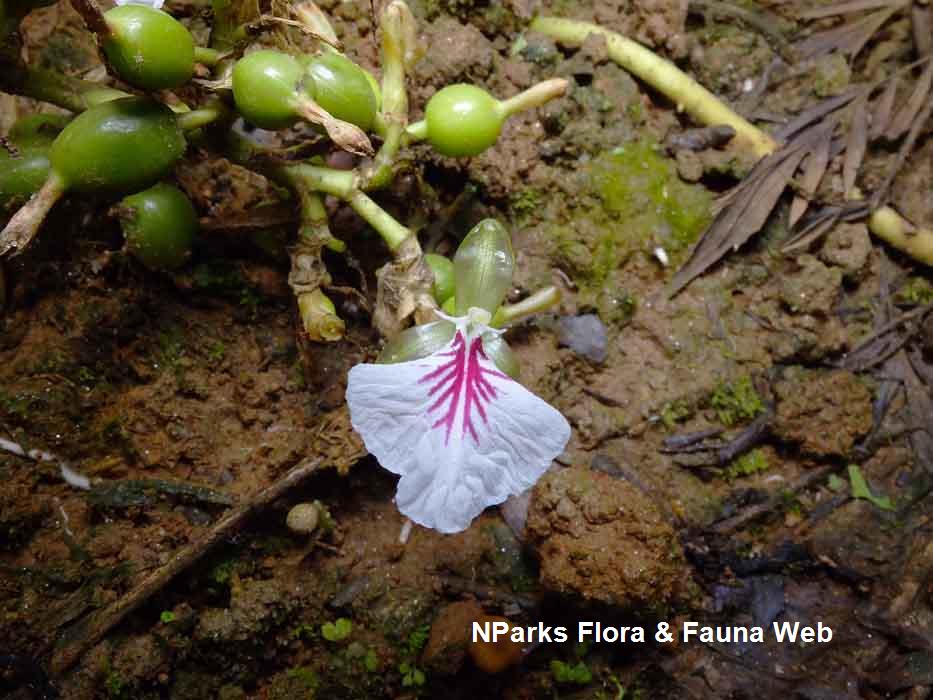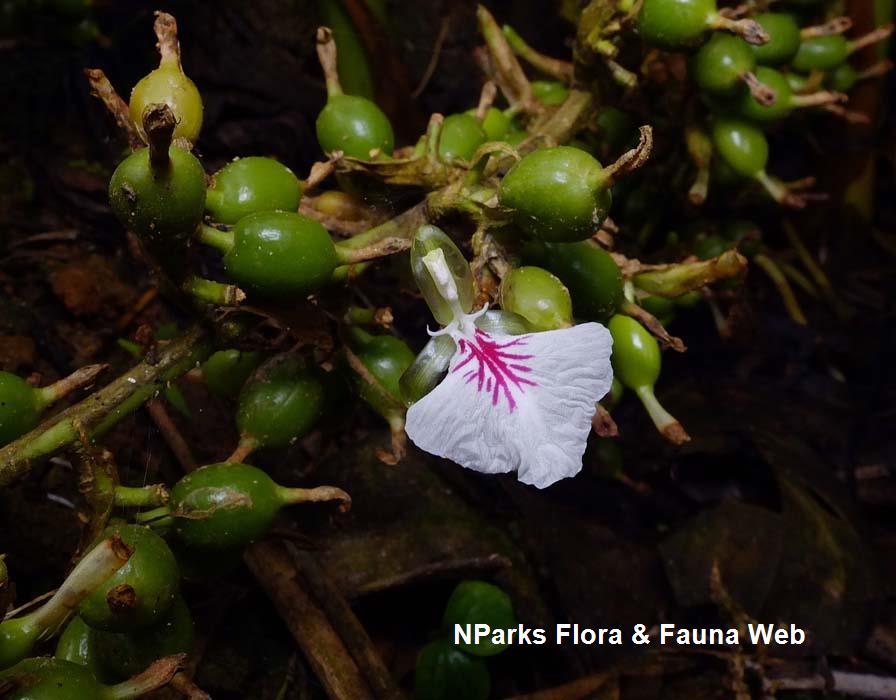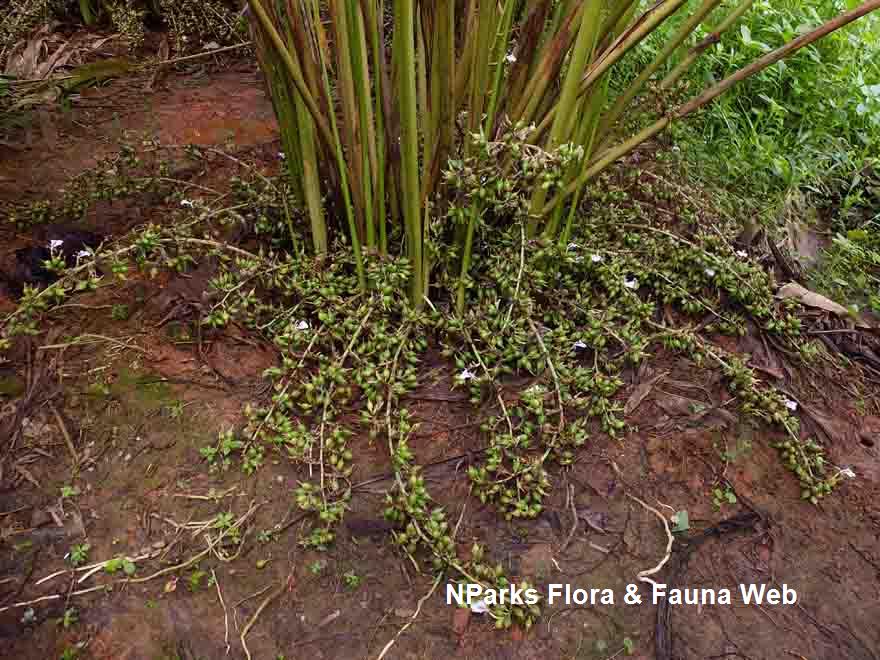
Back
Elettaria cardamomum (L.) Maton
| Family Name: | Zingiberaceae |
| Synonyms: | Elettaria cardamomum var. minor, Elettaria cardamomum var. minuscula |
| Common Name: | Cardamom, True Cardamom |
Name
Classifications and Characteristics
| Plant Division | Angiosperms (Flowering Seed Plants) (Monocotyledon) |
|---|---|
| Plant Growth Form | Herbaceous Plant |
| Lifespan (in Singapore) | Perennial |
| Mode of Nutrition | Autotrophic |
| Maximum Height | 2 m to 5.5 m |
Biogeography
| Native Distribution | India |
|---|---|
| Native Habitat | Terrestrial (Monsoon Forest) |
| Preferred Climate Zone | Tropical |
| Local Conservation Status | Non-native (Horticultural / Cultivated Only) |
| CITES Protection | False |
Description and Ethnobotany
| Growth Form | Herbaceous perennial forming clumps up to 5.5 m tall. |
|---|---|
| Foliage | Linear to lance-shaped leaves up to 0.6 m long are alternately arranged on stem-like structures known as pseudostems. |
| Flowers | White, butterfly-shaped flowers have reddish purple markings in the middle. Flowers occur in clusters near the base of the plant on a stem up to 1 m long. |
| Fruit | Light green, spherical to ellipsoid fruits have 3 internal compartments and are classified as capsules. Each fruit contains 15-20 black seeds. |
| Cultivation | Cardamom grows best under partial shade in fertile, loamy soil that is kept evenly moist. |
| Ethnobotanical Uses | Edible Plant Parts : Edible Seeds Food (Herb or Spice): The fragrant seeds are added whole or crushed to various dishes, desserts and beverages. The spice is relatively more expensive, because the fruit is harvested by hand while still immature to prevent seeds from falling out. It has been traded for more than a thousand years and is sometimes called the 'queen of spices.' Medicinal: Cardamom reduces inflammation and is used to treat sore throat, skin disease and digestive problems. |
Fauna, Pollination and Dispersal
| Fauna Pollination Dispersal Associated Fauna | Bee-Attracting |
|---|
Plant Care and Propagation
| Light Preference | Semi-Shade |
|---|---|
| Water Preference | Moderate Water |
Foliar
| Foliage Retention | Evergreen |
|---|---|
| Mature Foliage Colour(s) | Green |
| Mature Foliage Texture(s) | Glossy / Shiny |
| Foliar Type | Simple / Unifoliate |
| Foliar Arrangement Along Stem | Alternate |
| Foliar Attachment to Stem | Sessile |
| Foliar Shape(s) | Non-Palm Foliage (Lanceolate) |
| Foliar Venation | Pinnate / Net |
| Foliar Margin | Entire - Wavy / Undulate |
| Foliar Apex - Tip | Acuminate |
| Foliar Base | Clasping |
| Typical Foliar Area | Macrophyll ( 182.25cm2 - 1640.25 cm2 ) |
Floral (Angiosperm)
| Flower & Plant Sexuality | Bisexual Flowers |
| Flower Colour(s) | White |
|---|---|
| Flower Texture(s) | Wrinkled |
| Flower Grouping | Cluster / Inflorescence |
| Flower Symmetry | Bilateral |
| Inflorescence Type | Panicle |
Fruit, Seed and Spore
| Mature Fruit Colour(s) | Green - Light Green |
|---|---|
| Mature Fruit Texture(s) | Smooth |
| Fruit Classification | Simple Fruit |
| Fruit Type | |
| Mature Seed Colour(s) | Black |
| Mature Seed Texture(s) | Smooth |
| Seed Quantity Per Fruit | Several (11-20) |
Image Repository
Others
| Master ID | 34235 |
|---|---|
| Species ID | 8648 |
| Flora Disclaimer | The information in this website has been compiled from reliable sources, such as reference works on medicinal plants. It is not a substitute for medical advice or treatment and NParks does not purport to provide any medical advice. Readers should always consult his/her physician before using or consuming a plant for medicinal purposes. |





